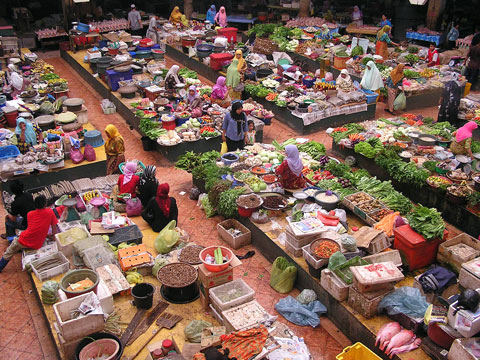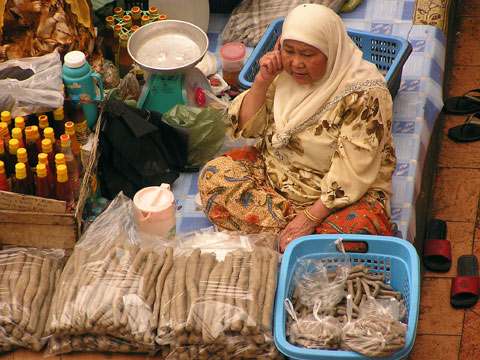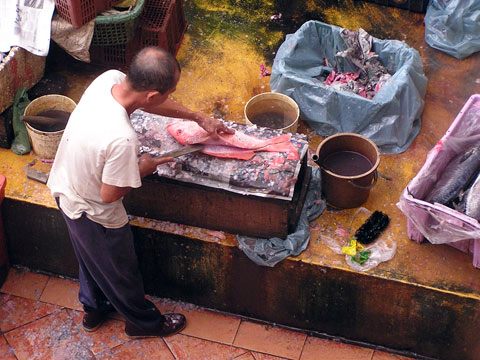
The central octagonal hall of Kota Bharu’s central market (Pasar Siti Khadijah) opens up like a cathedral devoted to the veneration of fresh Malaysian produce. A skylight illuminates the scene in a dull sepia glow throughout the day; upper levels providing a birds-eye view of the myriad proceedings below. By the crowded standard of Malaysia’s wet markets, Kota Bharu market has an overwhelming sense of austerity in comparison.
A while ago EatingAsia rhetorically asked whether you’d consider moving for a wet market, and for this one, I probably would. I ended up lingering for a few extra days in Kota Bharu just for the food, dropping by the market’s outstanding food hall for my curry fix. I had expected that Penang would be the sort of place that I could settle in, but not this northeastern corner of peninsular Malaysia. Maybe I could overlook the Kelantan state’s dominant but declining political party toying with the idea of hudud law. Maybe I could dismiss the concomitant lack of a brewery.
The ground floor plays host to primarily vegetable sellers on raised platforms with meats confined to the darker outer rim.
Keropok lekor, grey tubes of fish paste and starch, are probably one of the world’s least attractive foods in their pre-fried form. These snakes of sticky paste are sliced diagonally and then deep fried; giving a little crispness on the outer edges and chewiness to the centre. The flavour (in this case) is unrelenting fish.
I am always impressed by the effortlessness and economy by which people can clean a fish with a meat cleaver without destroying it. Any time I’ve tried it myself, I end up reverting back to a more flexible knife to peel out the chunks of fillet that I’ve missed entirely. The above method involved cutting the fish along the fillet on each side, then cleaving the head cleanly in two, so that the buyer received exactly half a fish, sans-innards.
See also:To Market, to market event at A Scientist in the Kitchen



